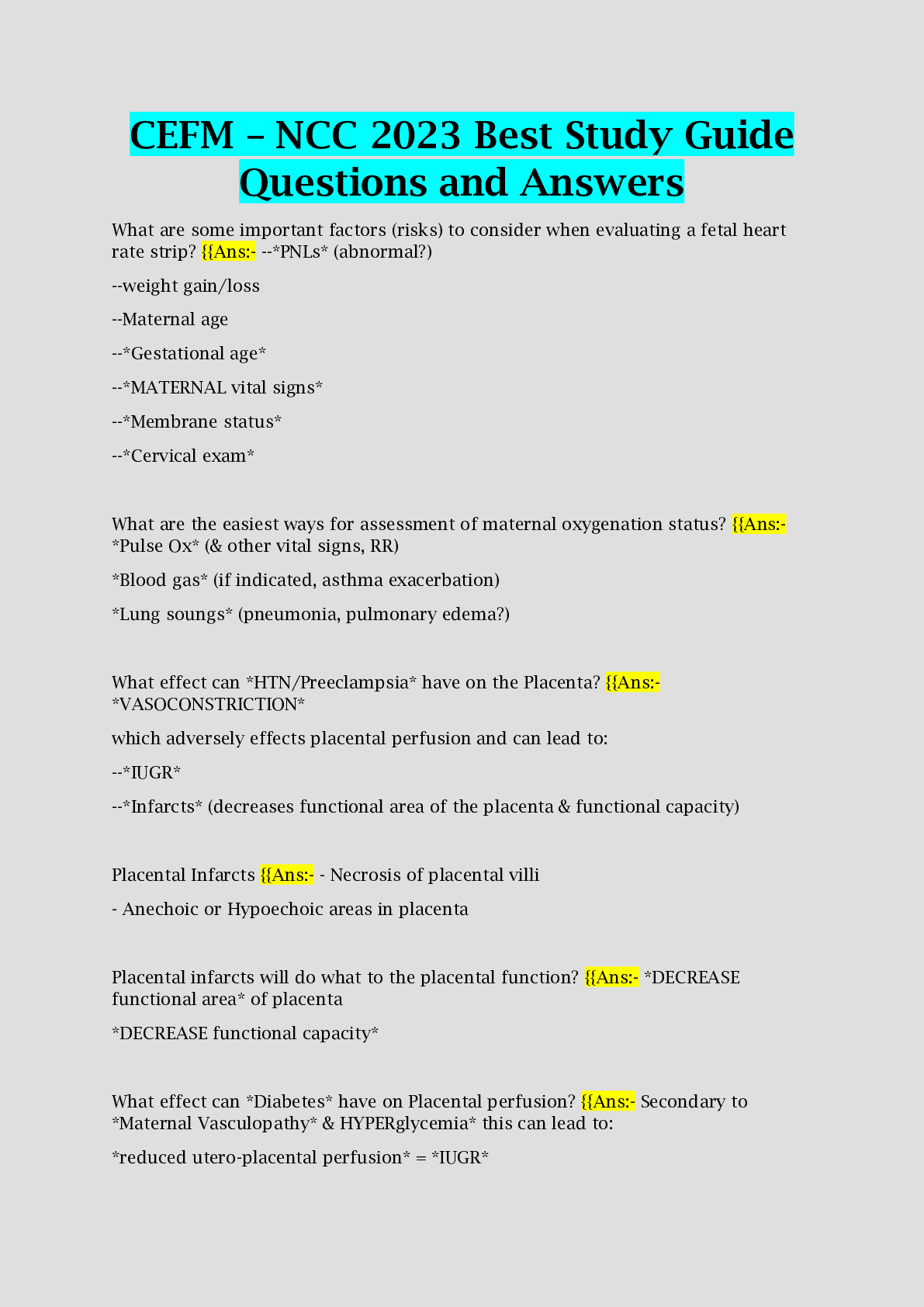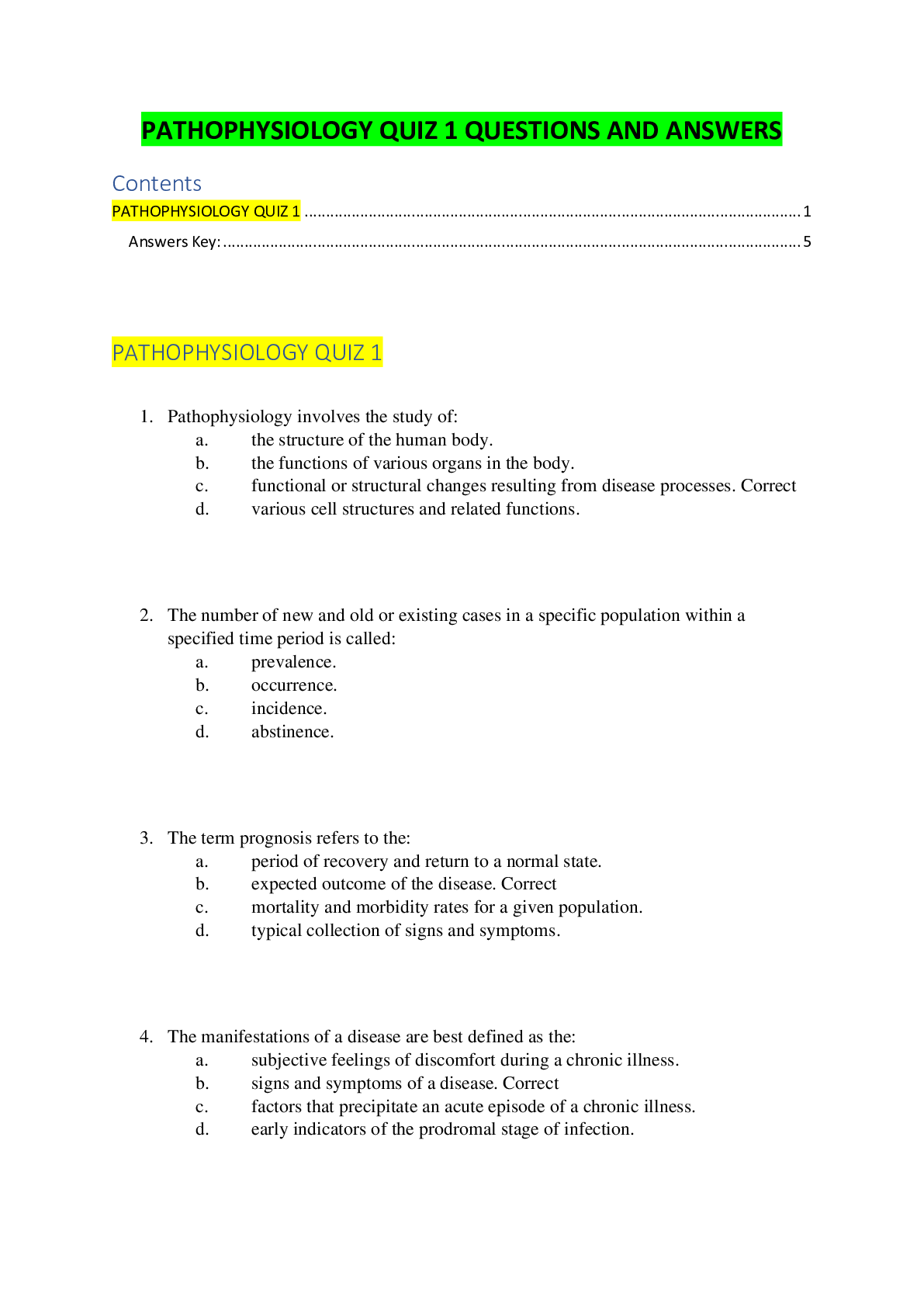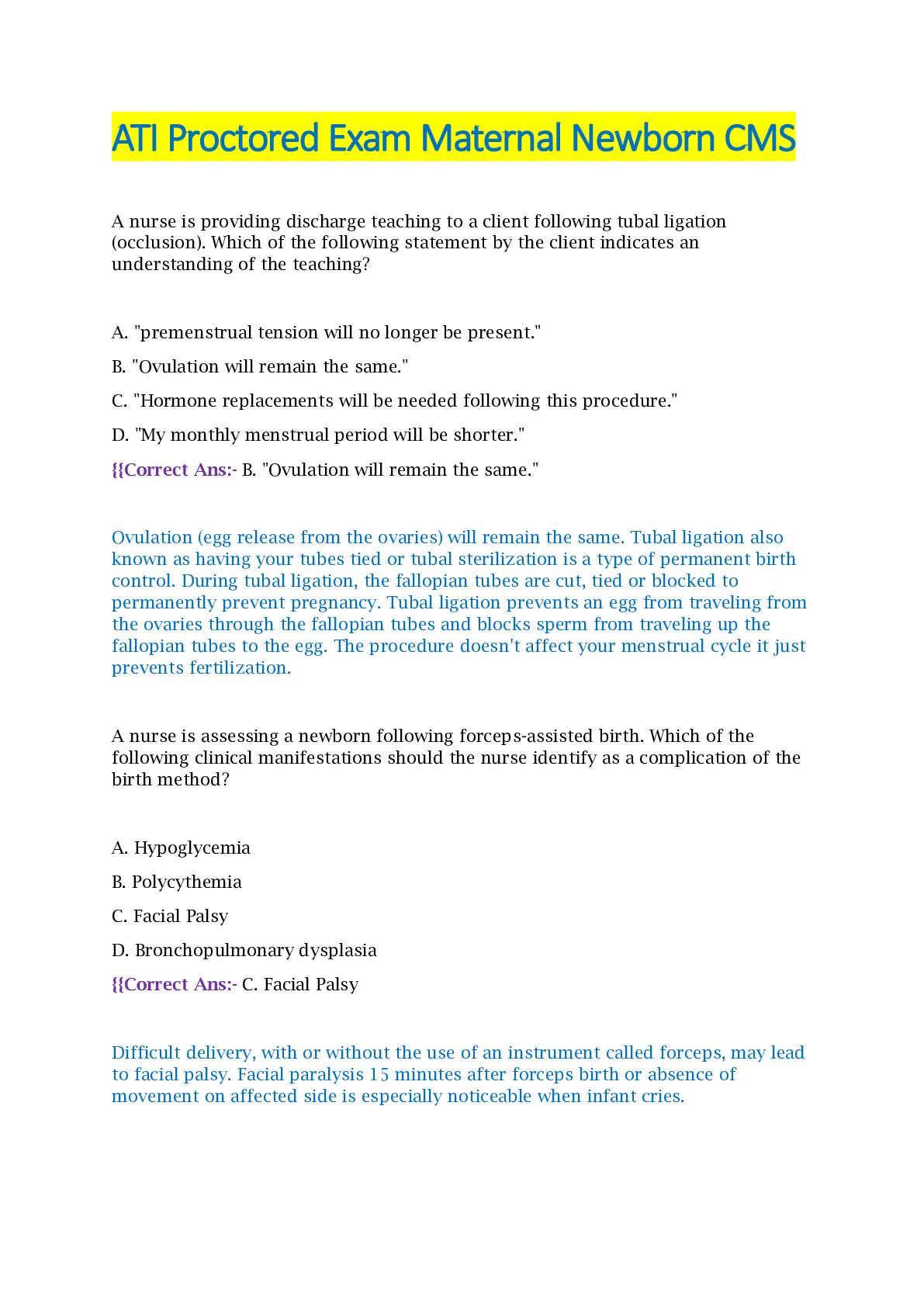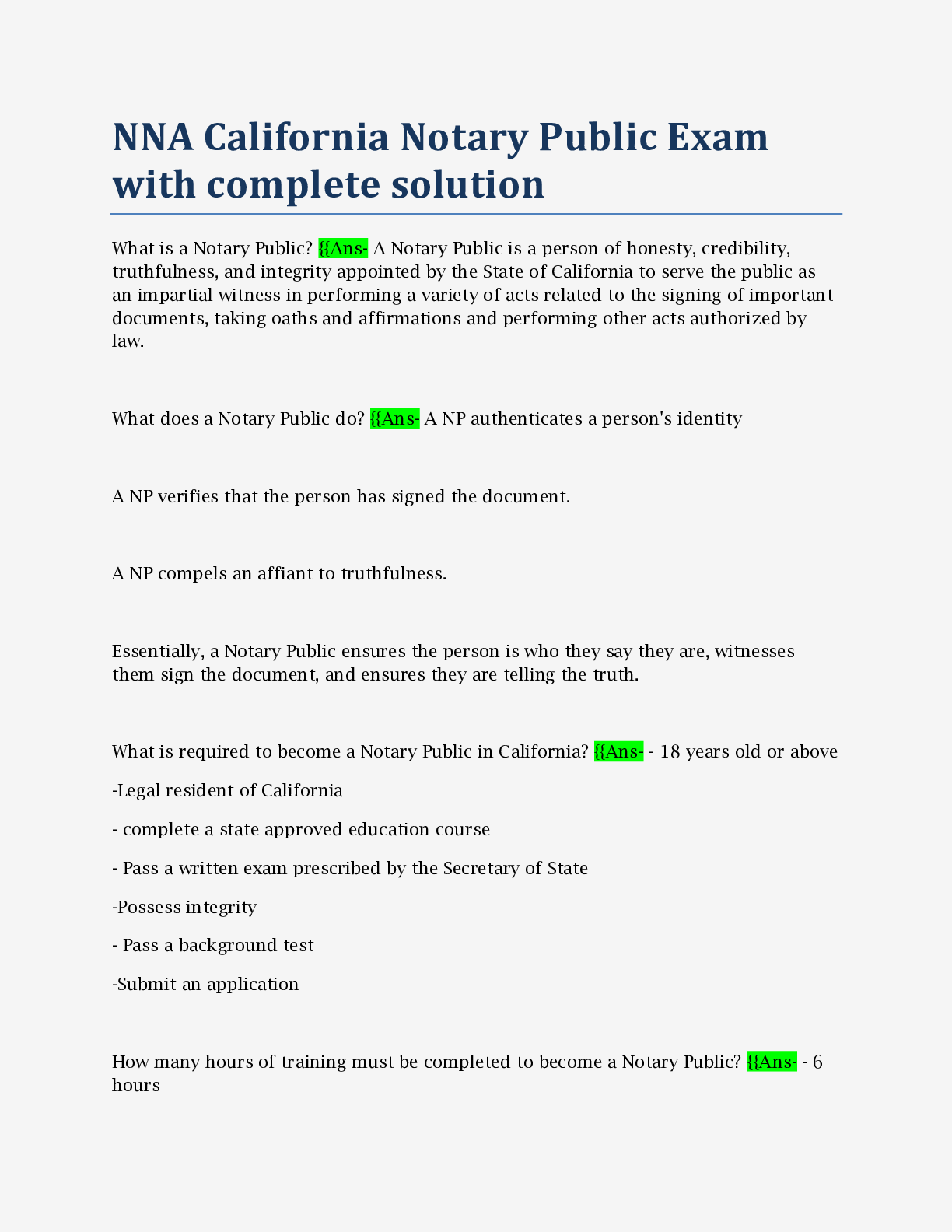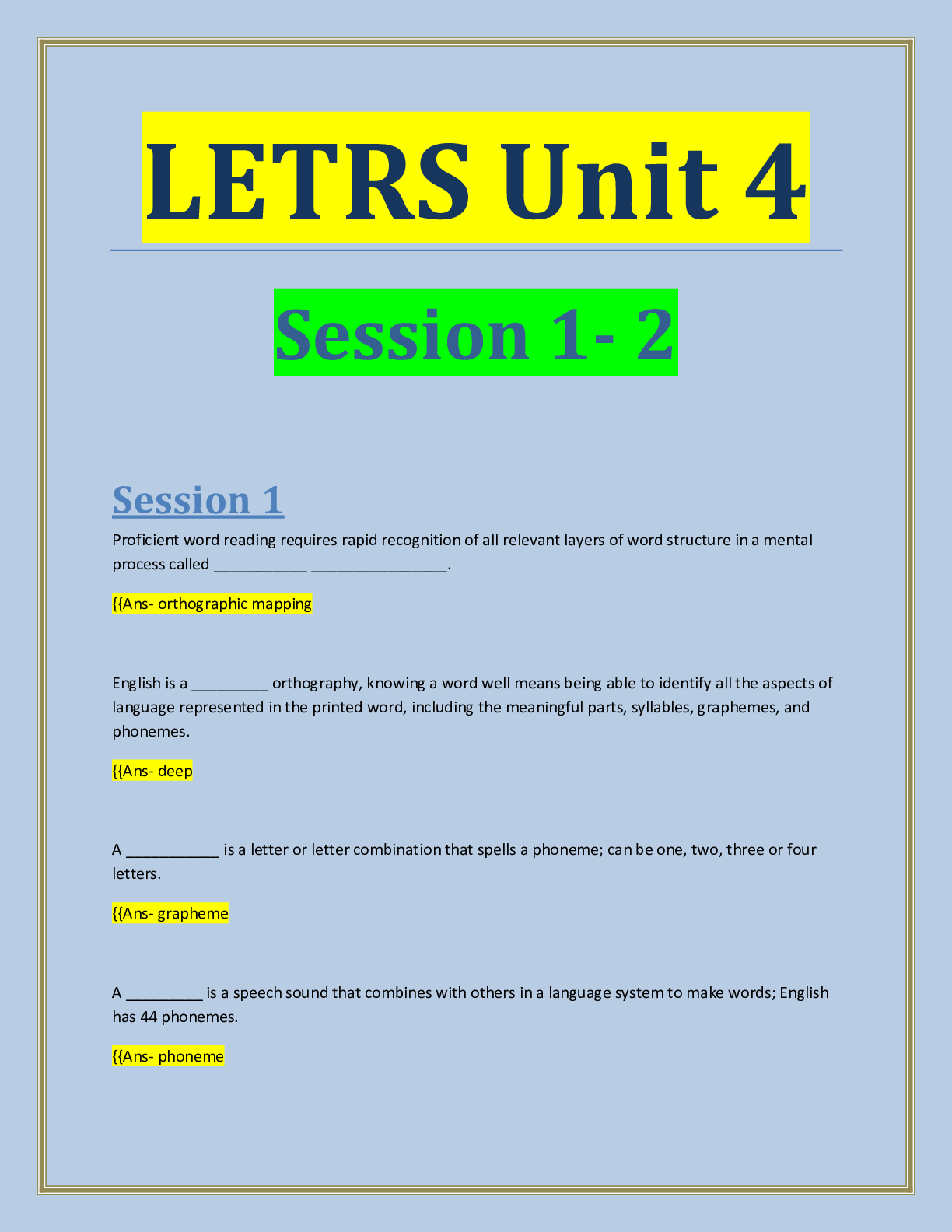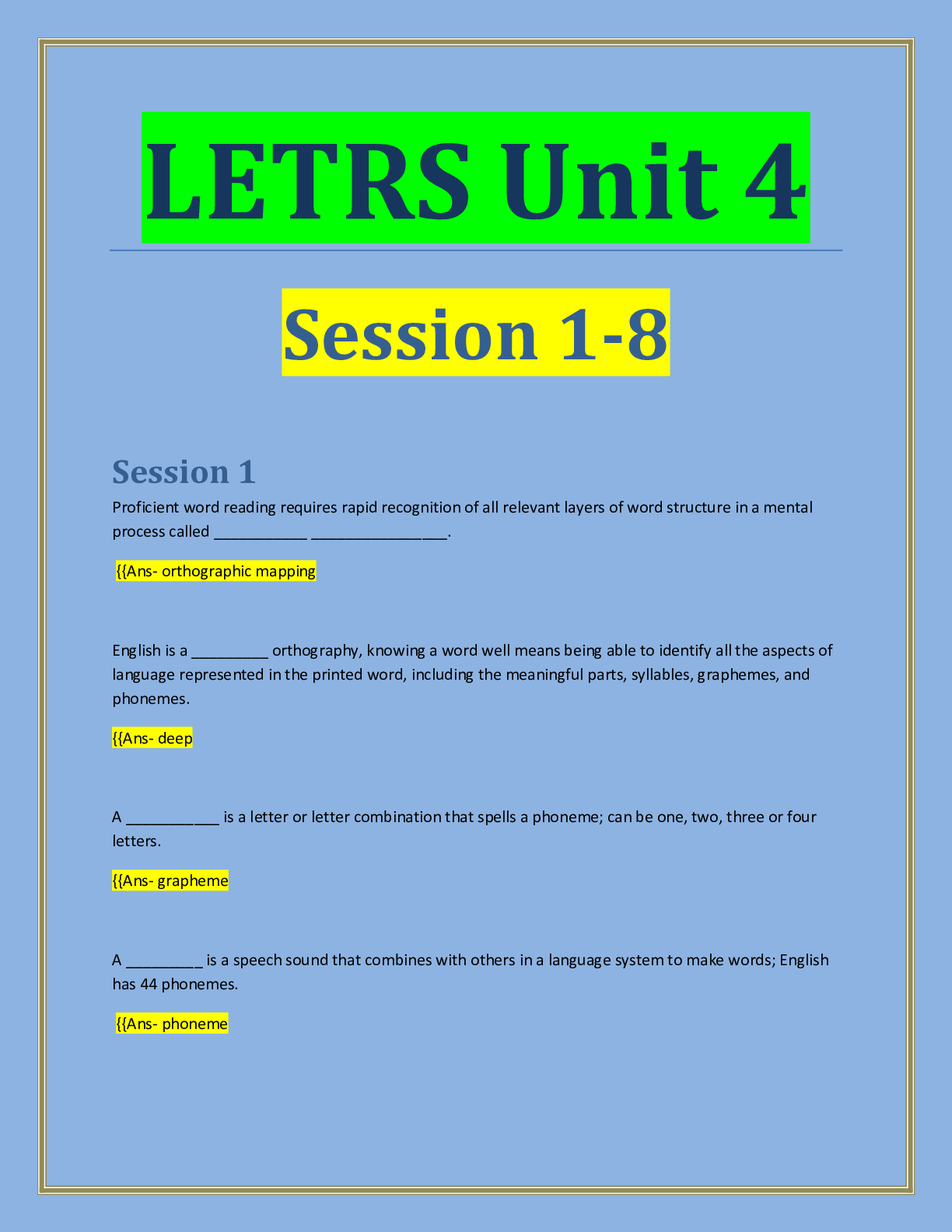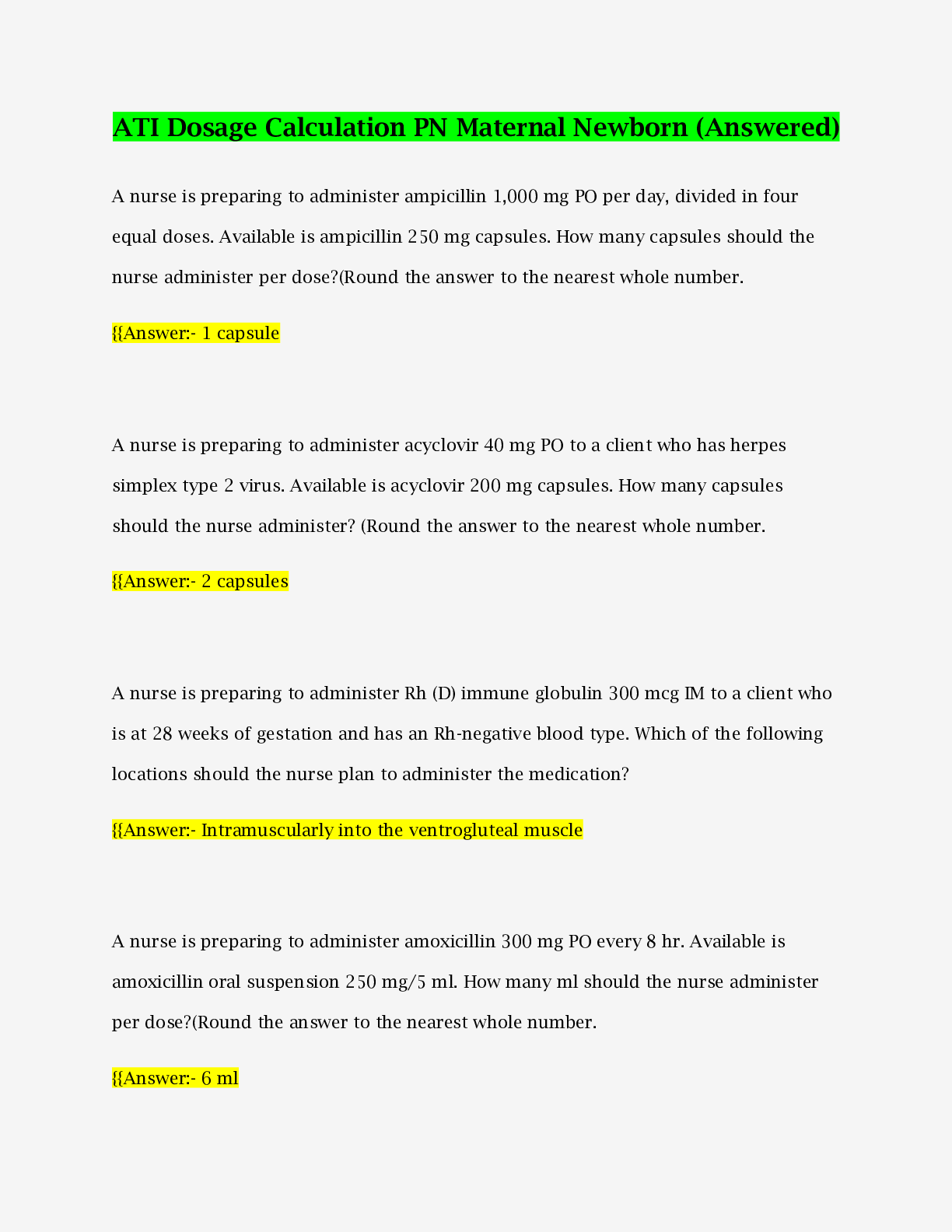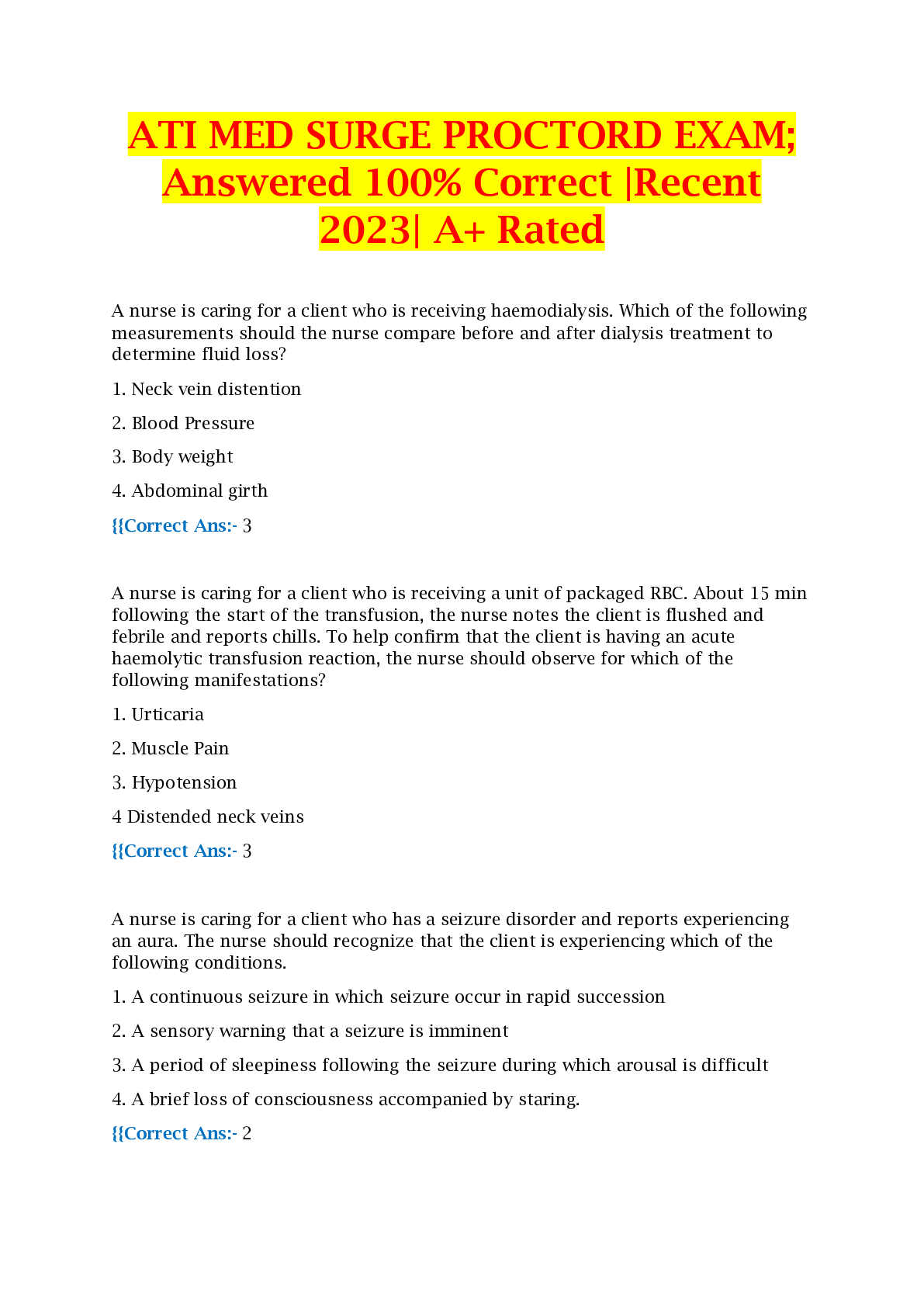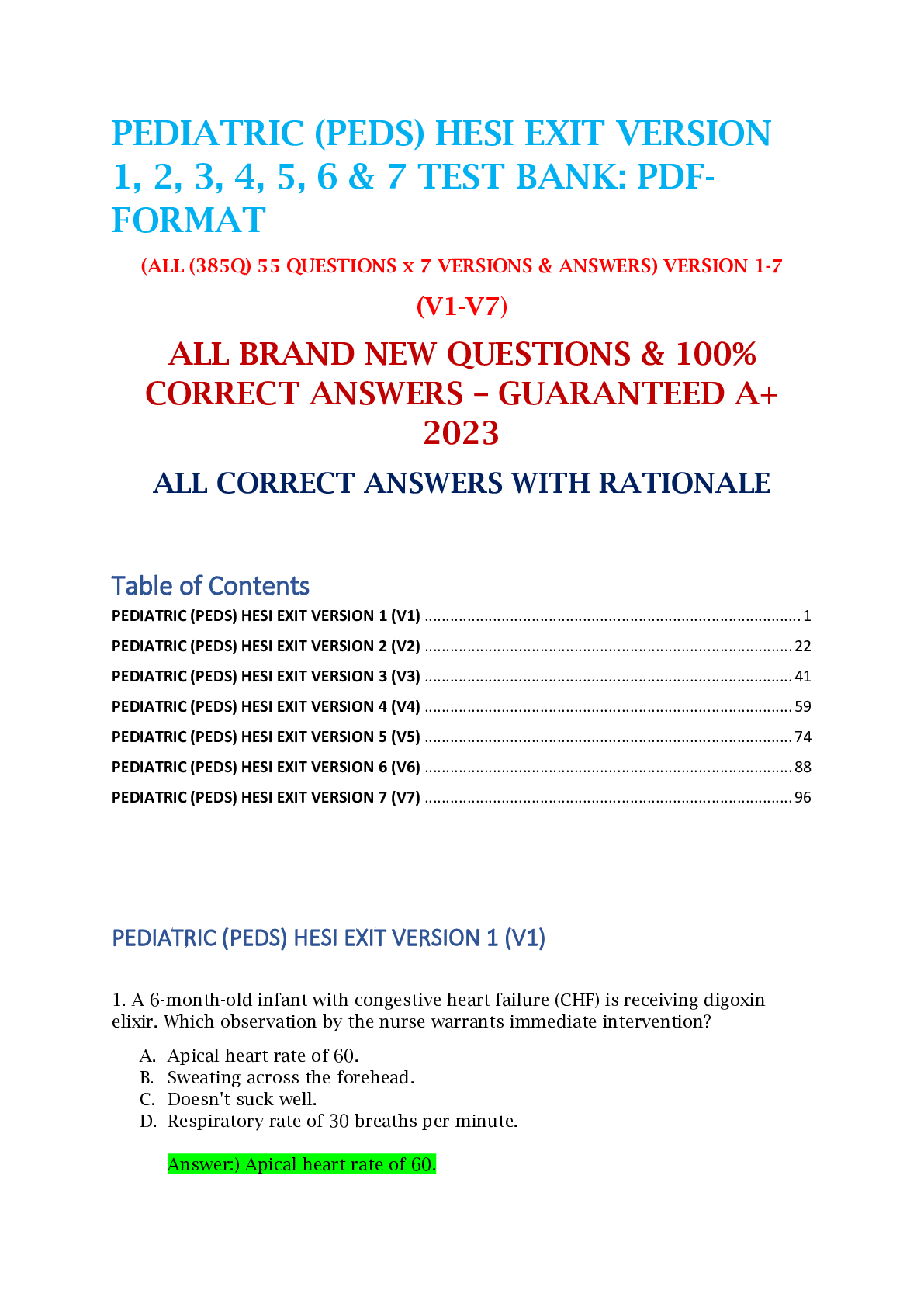LETRS Unit 5 Session 1-6| Verified 100% Answered Correctly
Document Content and Description Below
Session 1 Recognizing the meaning of a partially known word in context is an example of: a. high-frequency vocabulary. b. linguistic richness. c. expressive vocabulary. d. receptive vocabulary.... {{Ans- receptive vocabulary. A developed vocabulary in preschoolers predicts better reading comprehension in third grade. true false {{Ans- true About how many words should be taught in depth per week in the primary grades? 5 10 25 50 {{Ans- 10 Every word a student is exposed to is stored in both the phonological and semantic lexicons. true false {{Ans- false Which of these statements are true? (Select all that apply.) a. It is impossible to measure the exact size of a person's vocabulary. b. Typical students will learn more than 5,000 new word meanings each year through sixth grade. c. The average student entering kindergarten knows about 4,000 words. d. In the primary grades, about 10 words per week can be taught in-depth. {{Ans- c. The average student entering kindergarten knows about 4,000 words. d. In the primary grades, about 10 words per week can be taught in-depth. [Show More]
Last updated: 1 year ago
Preview 1 out of 6 pages
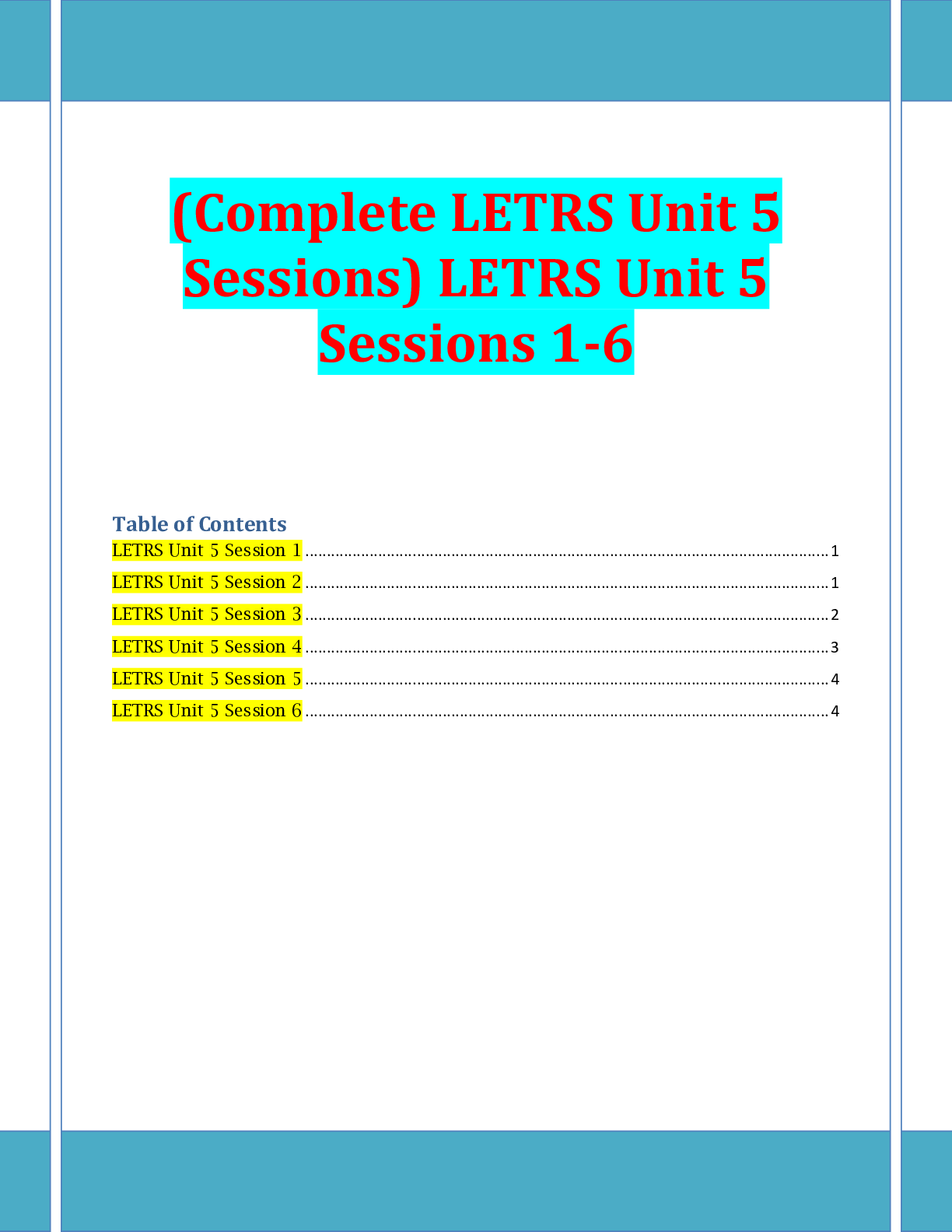
Buy this document to get the full access instantly
Instant Download Access after purchase
Buy NowInstant download
We Accept:

Reviews( 0 )
$6.00
Can't find what you want? Try our AI powered Search
Document information
Connected school, study & course
About the document
Uploaded On
Oct 15, 2022
Number of pages
6
Written in
Additional information
This document has been written for:
Uploaded
Oct 15, 2022
Downloads
0
Views
254

